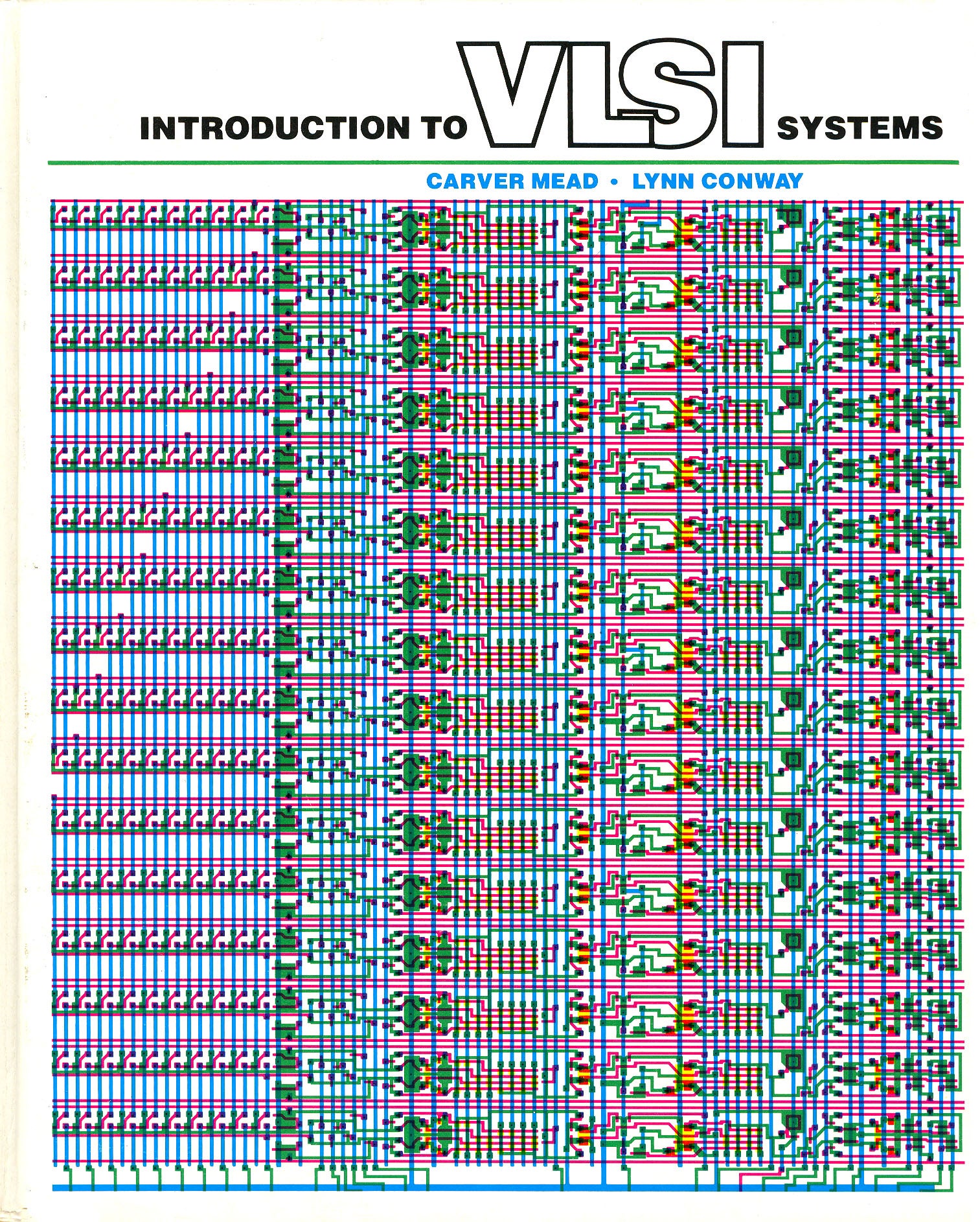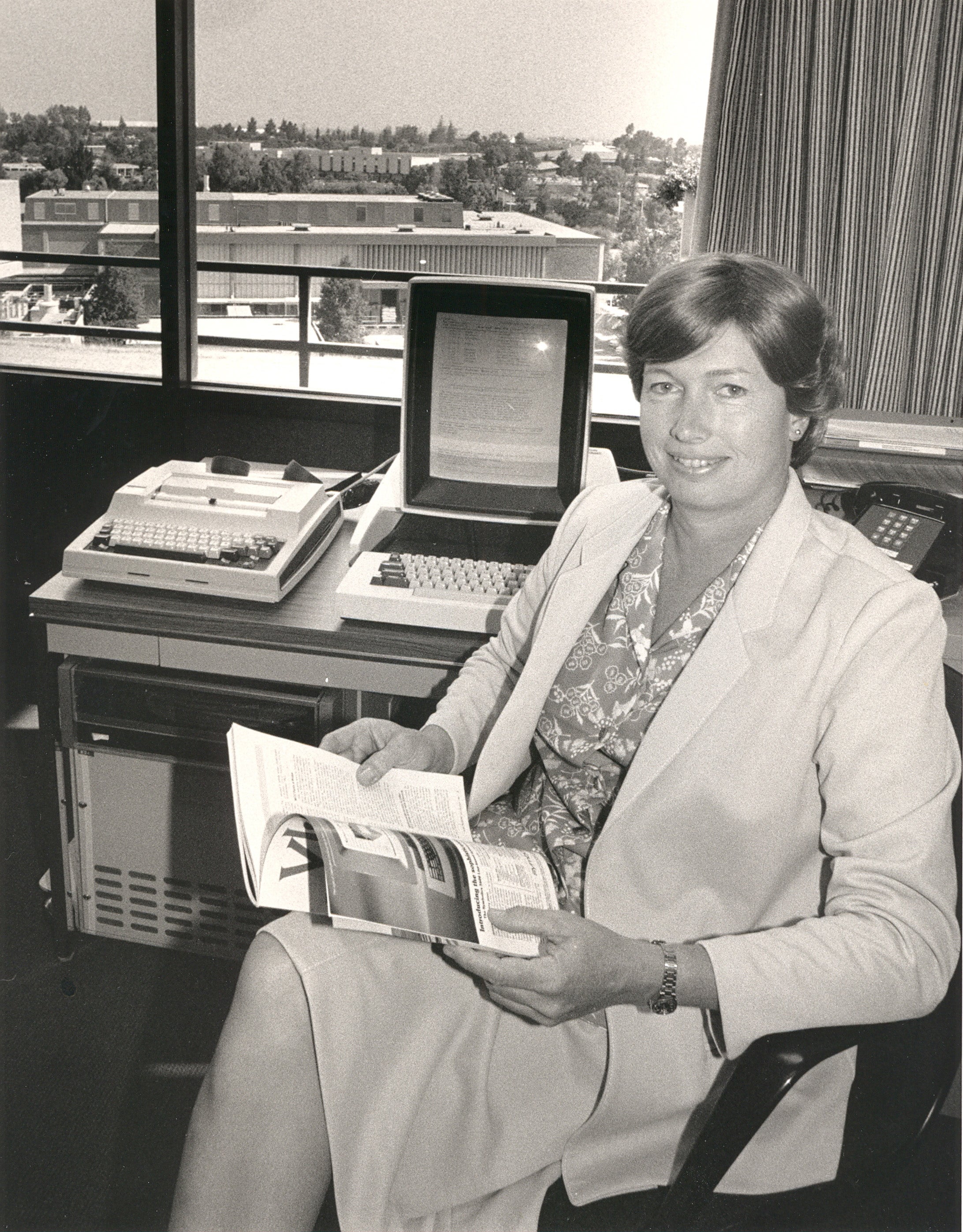‘I was completely, manically joyful’: How a trans woman changed computing in the modern world
Her ideas launched a global microchip revolution – but for years she was afraid to claim her share of credit. Io Dodds meets the LGBT+ pioneer who helped create the modern world


Your support helps us to tell the story
From reproductive rights to climate change to Big Tech, The Independent is on the ground when the story is developing. Whether it's investigating the financials of Elon Musk's pro-Trump PAC or producing our latest documentary, 'The A Word', which shines a light on the American women fighting for reproductive rights, we know how important it is to parse out the facts from the messaging.
At such a critical moment in US history, we need reporters on the ground. Your donation allows us to keep sending journalists to speak to both sides of the story.
The Independent is trusted by Americans across the entire political spectrum. And unlike many other quality news outlets, we choose not to lock Americans out of our reporting and analysis with paywalls. We believe quality journalism should be available to everyone, paid for by those who can afford it.
Your support makes all the difference."Basically you were an outlaw," says Lynn Conway from her home in rural Michigan, as she recalls her years working at the heart of the American computer industry while hiding a secret that could have wrecked her career.
"You have to operate at a high level pretty quickly, or else you’ll get exposed," the 85-year-old continues. "But at the same time you have to be kind of affable, and not attract attention… Can’t ever get angry, or show fear."
Altogether, Conway reflects, it is "eerie" just how much her life as a transgender woman at the dawn of Silicon Valley resembled that of a deep-cover Soviet spy – whose methods she would later learn about while working for the US Department of Defence.
"I think a lot of us are living more interesting, more fun lives than most people. It’s our secret," she tells The Independent. "The added pressure [on trans people] to learn, to adapt, to figure things out, and to find ways to manoeuvre... actually provides lessons beyond what most people face."
Even if you’ve never heard of Conway, you’ve felt her influence. Today’s superabundance of digital devices, from iPhones to computerised coffee machines, was made possible in part by her ideas.
As a pioneering computer architect in the 1970s, Conway co-developed a revolutionary new method of microchip design that allowed billions of individual components to be integrated into one chip with relative simplicity.
That method, known as Very Large Scale Integration (VLSI), blew open the tech industry to individuals and small companies across the world while allowing processor speeds to ascend into the stratosphere. As the University of Michigan put it in 2014: "Thank Lynn Conway for your cell phone."

But for years, Conway’s role was overshadowed by that of her male collaborator Carver Mead and other "founding fathers" of Silicon Valley. That, she argues, was partly because she is a woman and partly because she had been forced to live much of her life in "stealth", leery of attracting attention lest she be outed to a hostile world.
She had already been forced to restart her career from scratch with a new identity in 1969, after being fired by IBM for telling her bosses she was transitioning. The rupture meant she could not claim credit for techniques she had invented there, even as they became standard practice across the industry.
And so, over the past two decades, Conway has been investigating – and attempting to reverse – what she describes as her "disappearance" from history, chronicling her experiences both as a computing and a gender trailblazer.
Slowly, that recognition is coming to pass. In 2009, she received an award from the engineering trade group, the Institute of Electrical and Electronics Engineers(IEEE). In 2020, IBM finally apologised for firing her 42 years earlier.
And this October she was inducted into the National Inventors’ Hall of Fame as the co-creator of VLSI – 14 years after Mead received the same honour.
Now, speaking to The Independent, Conway wants the world to understand what made that revolution possible and why she feels so strongly about telling her side of the story.
"What I’m interested in... isn’t so much who I am, but what I actually did," she says. "The joy I felt – the joy of discovery. The daring to push send on something that I knew was going to change the world.
"Those were the moments that mattered to me, and I want to talk about them so that people can learn to notice: how do you do stuff like that? Where do you get the nerve to take that risk?"
‘I just noticed whole industries had no clue what they were doing’
Conway was born in 1938 in White Plains, just outside New York City, four years before the completion of the world’s first electronic digital computer.
As a child she remembers standing in her family’s garden shortly after Pearl Harbour, watching her father demonstrate a fire extinguisher designed to protect their roof from incendiary bombs.
Today she lives on a 23-acre plot outside Ann Arbor with her husband Charlie ("a teddy bear," she says), whom she married in 2002. She has two children, four grandchildren, and six great-grandchildren stemming from a previous marriage, plus a rotating cast of cats.
These days she has largely retired from sports such as rock climbing and motocross ("getting old is a real serious adventure sport"). But her conversations have a playful agility, leaping unpredictably from topic to topic, sometimes in mid-sentence, peppering her speech with "you see?" while she traces surprising lateral connections between the rise of Christian nationalism, the Wizard of Oz books, and the 2022 film Monica.
"I’m actually kind of wacky, see?" she laughs. "And I admit that."

Wackiness was hardly unusual in early Silicon Valley. After graduating from Columbia University in the early Sixties, Conway had moved to Menlo Park, California – now the home of Facebook’s parent company Meta – to work on a secretive IBM supercomputer known as Project Y. Her team was considered so nerdy and eccentric that the project leader was nicknamed "the Zookeeper".
In 1973, under a new name, she joined Xerox’s famous PARC lab in nearby Palo Alto, which pioneered now-ubiquitous concepts such as the personal computer, the mouse, and the digital desktop interface. It was there that she noticed "whole industries had no clue what they were doing".
The problem was the ballooning complexity of designing new microchips. The number of transistors that could be packed into one chip was growing exponentially – a phenomenon dubbed "Moore’s Law" by the engineering professor Carver Mead. Yet actually taking advantage of such power was difficult because chip design was still a bespoke, effectively manual process.
Mead had long been studying this problem, and in 1976 he and Conway began working together on a solution. Their innovation was to develop simple rules for grouping transistors together into standardised clusters, like blocks of buildings in a city, which could be arranged on a grid in standardised patterns.
It was, Conway explains, comparable to the impact of the moveable type printing press on European literature – allowing each new page to be quickly assembled out of alphabetic components rather than laboriously carved into one block of wood.
Instead of trying to go through traditional chipmakers, Conway wanted to spread this method across the world as fast as possible, hoping to give other people the tools to create change.
Throughout 1977 and 1978, she used the new-fangled equipment at PARC – including home printers and the early internet – to rapidly assemble and edit these ideas into a bombshell textbook on VLSI design, co-authored with Mead.
She soon became VLSI’s chief evangelist, first teaching an MIT course where students could get their own microchip designs printed within a few weeks, then building an online system that extended this capability to a nationwide network of similar courses.

As she rode the wave, Conway remembers feeling a "complete resonance with the universe". She says: "I was so completely, manically joyful that I was, like, whacko! That’s the way it is when crazy things are happening, like in a cool start-up... you’re just having so much fun."
Soon the Feds came knocking, and in 1983 Conway was recruited by the US military research agency DARPA. The background checks went so smoothly that she is sure she wasn’t the Pentagon’s first trans employee, although she never ran into any others.
In 1985 she switched to academia at the University of Michigan, where she remains a professor emerita today.
At first, Conway was generally recognised alongside Mead as the progenitor of VLSI. Throughout the 1980s they received multiple joint awards. But in the 2000s and 2010s Conway’s honours began to dry up, while Mead’s accelerated.
Conway traces that change in part to the influence of George Gilder, a former speechwriter for Ronald Reagan and anti-feminist author turned internet evangelist, who lionised Mead in his best-selling 1989 book Microcosm.
"Mead probably thinks it was 80/20 him; most people, I think, in the long term, will find it was really 80/20 me," she says, matter-of-factly.
For his part, Mead tells The Independent that he never sought out those awards and wasn't party to their decision process, but strongly supported Conway's nomination to the National Inventors' Hall of Fame.
"I certainly empathise with Lynn's feelings on these matters… without her leadership I think the VLSI revolution would have taken much longer," he says.
As to the share of credit for VLSI, he says: "From 1971 to 1972, it was 100 per cent me. That decreased with time. After [late 1979] I was really burned out, and Lynn was leading the charge. For that period, I'll go with her number."
A ‘haunted’ world where transphobic violence was the norm
At the tail end of the 1950s, one of Conway’s friends introduced her to the dean of a prestigious medical school. She’d heard stories about people changing their sex, and she wanted to know: was it really possible?
Absolutely not, the dean told her. Such procedures could only make her a "freak", and pursuing them would likely end up with her in a mental institution.
"That set me back," she recalls. "That was horrible."
This was the environment in which Conway came of age. She remembers family holidays in Texas where she witnessed how Black people were treated by local whites – a glimpse of the violence lurking underneath the "appearance of normalcy" that adults seemed to cling to.
"It was like the world was haunted," she says. "You go to church on Sunday and everyone’s pretending this is all wonderful. But it’s not all wonderful, and if you get any hint that you might fall into one of these categories, it’s like suddenly you’re in the middle ages, and there’s spirits and terrors and devils that are gonna get you."
Yet by the early Sixties, a change was rippling through the underbelly of American society. As Conway tells it, the media sensation over Christine Jorgensen – a trans former Army draftee who was outed by The New York Post in 1952 – had alerted a growing minority to the truth that it was, actually, entirely possible to change one’s secondary sex characteristics through hormone therapy and surgery.
Not unlike VLSI, the knowledge spread by example, driven by people’s desire to make use of it rather than by top-down mandate.
To Conway, all this felt like a natural fit with the can-do spirit of the early tech industry. "There was a feeling in the air that we were all being empowered to take all this burgeoning new knowledge and just go do stuff," she says. " If you wanted to [modify your body] why not try it?"
Possible is not the same as easy. Conway’s transition, beginning in 1967, ultimately sundered her first marriage and cut her off from her family for years. There were times when she escaped violence only narrowly, and she could not rely on the law for protection. Other girls she knew were sex workers who were routinely victimised by the police – events she still shudders to remember.
Conway played the spy game, and in time her pre-transition self came to seem like a different person ("I call him my evil twin brother," she says). Often she would meet former colleagues who didn’t realise they’d already met her.

It was only after her retirement, when research into IBM’s nearly-forgotten Project Y threatened to uncover her past, that she began coming out to people beyond her inner circle. She remains sensitive about how her story is described, wary of misrepresentation.
In 2000 she started writing about her experiences and compiling evidence of her work on her personal website, making it a resource for people considering or beginning transition. She engaged in activism, pressing the IEEE to include trans people in its code of ethics and marshalling opposition to the theories of controversial sexologist Kenneth Zucker.
In the end, Conway believes, the danger made her stronger, and was eclipsed by the "dramatic, profound joy" of having transitioned. To finally be comfortable in herself after so long in chains was like suddenly being able to fly – and gave her a deep appreciation for what she had.
‘Things are changing so fast. Every few years is like decades’
Conway has thought deeply about what drives innovation. She is scathing about the so-called "great man theory" of history, which credits paradigm shifts to the individual genius of powerful people.
"When you’ve been on the inside of all these tents and stuck your nose through all the peepholes... you start noticing that it’s madness all the way up," she says. "The further up you go, the weirder it gets.
Instead, she argues, paradigm shifts come about through a complex "unfolding" process in which many individuals exploit the possibilities unlocked by new technologies and ideas, communicating with and learning from each other as they go.
One of her favourite examples – and a major inspiration for her approach to VLSI – was the intertwined march of railroads and telegraph wires across the US. Rather than some grand plan, she describes it as an "exploratory process" where groups who founded new settlements could quickly establish links back to the lands they’d left behind and use them as a scaffold for further exploration.

On a personal level, Conway gives a hefty share of the credit for her accomplishments to gender transition itself.
"I can’t explain any other way how I could have done what I did," she says. "I actually became a really different person.”
“Being able to see a moment and be decisive and seize it, and make it happen,” she continues. “Getting other people all fired up, and working together towards [a] shared mission… new capabilities I didn’t have before, that completely enhanced my feeling of being alive."
That is why she believes that trans people are unusually likely to have ideas ahead of their time, or to be at the forefront of new artistic or technological movements.
"We are highly empowered – in ways that people may not understand – because of the joyfulness we feel in having been able to do what we do in spite of the difficulties," she says.
Despite this, Conway is keen to be seen first and foremost as a talented engineer. She urges me to read a recent interview with the pop star Kim Petras, who said: "I just so happen to be transgender, but that’s not all I am... reaching equality is being able to be known as a great artist.”
Perhaps there is no contradiction. Conway appears to see transition as just one of many "profound" experiences that can give someone a risk-taking edge or an unusual perspective, likening it to a particularly immersive adventure sport. Gender, race, disability, innovation and oppression: as ever for Conway, it’s all connected.
Today she is still drawing connections. She regularly chats with academics and engineers across the world, sending LinkedIn messages to strangers she finds interesting.
She is well abreast of the microchip war between China and the West, and sees in artificial intelligences such as ChatGPT the potential for another "unfolding" that multiplies ordinary people’s abilities.
"Things are changing so fast that every few years is sort of like decades," she says. "Forces are clashing, and it’s either headed into something joyous or it’s going to go ‘boom’."
Humanity, she argues, is caught in a race between the escalating speed of change and our limited ability to predict and adapt to it. The current backlash against trans rights is one manifestation of this dynamic; the next may be over cybernetic "amplification" of our bodies and minds.
Nevertheless, Conway is hopeful for the future, and for trans people’s role in it – not least because transitioning is "just too much fun" to stop people from doing it.
"We’re going to watch the trans community become a powerful force for novel and exciting views about life that have not surfaced before," she says. "And people are going to want to listen to what we have to say – not because we’re trans, but because we’re delivering goods.
"And [eventually] they forget you’re trans, and wonder ‘how did you get that way?’ And then you can tell them: ‘Well, I lived a pretty adventurous life.’"
Join our commenting forum
Join thought-provoking conversations, follow other Independent readers and see their replies
Comments